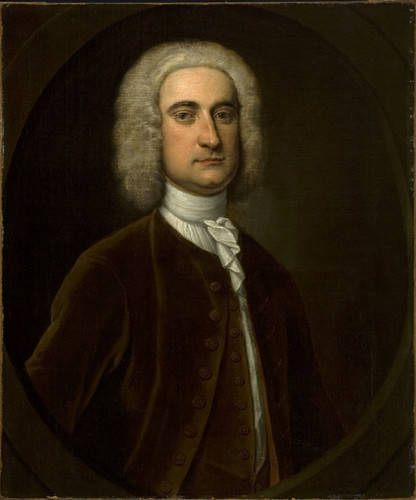John Loveday The Younger on:
[Wikipedia]
[Google]
[Amazon]
 John Loveday (1711–1789) was an English antiquarian. With the publication of his journals, he is now known for descriptions of English country houses.
John Loveday (1711–1789) was an English antiquarian. With the publication of his journals, he is now known for descriptions of English country houses.
 John Loveday (1711–1789) was an English antiquarian. With the publication of his journals, he is now known for descriptions of English country houses.
John Loveday (1711–1789) was an English antiquarian. With the publication of his journals, he is now known for descriptions of English country houses.
Life
He was only son of Thomas Loveday of Caversham, then inOxfordshire
Oxfordshire is a ceremonial and non-metropolitan county in the north west of South East England. It is a mainly rural county, with its largest settlement being the city of Oxford. The county is a centre of research and development, primarily ...
, and Feenes Manor, Berkshire
Berkshire ( ; in the 17th century sometimes spelt phonetically as Barkeshire; abbreviated Berks.) is a historic county in South East England. One of the home counties, Berkshire was recognised by Queen Elizabeth II as the Royal County of Berk ...
, by Sarah, daughter of William Lethieullier, a Turkey merchant
The Levant Company was an English chartered company formed in 1592. Elizabeth I of England approved its initial charter on 11 September 1592 when the Venice Company (1583) and the Turkey Company (1581) merged, because their charters had expired, ...
of Clapham, Surrey
Surrey () is a ceremonial and non-metropolitan county in South East England, bordering Greater London to the south west. Surrey has a large rural area, and several significant urban areas which form part of the Greater London Built-up Area. ...
. After attending Reading school he matriculated at Magdalen College, Oxford
Magdalen College (, ) is a constituent college of the University of Oxford. It was founded in 1458 by William of Waynflete. Today, it is the fourth wealthiest college, with a financial endowment of £332.1 million as of 2019 and one of the s ...
as a gentleman-commoner
A commoner is a student at certain universities in the British Isles who historically pays for his own tuition and commons, typically contrasted with scholars and exhibitioners, who were given financial emoluments towards their fees.
Cambridge
...
on 13 February 1728, and graduated B.A., in 1731, M.A. in 1734. As an undergraduate he developed a taste for archaeology.
Loveday lived at Caversham, and with inherited money collected pictures, books, and antiquities. He purchased Dr. John Ward's manuscripts and coins, and founded a family library at Williamscote, near Banbury. He was well connected among the literati.
Loveday died on 16 May 1789.
Works
Loveday wrote papers under various pseudonyms in the '' Gentleman's Magazine'', and his "Observations upon Shrines", a paper read before theSociety of Antiquaries of London
A society is a group of individuals involved in persistent social interaction, or a large social group sharing the same spatial or social territory, typically subject to the same political authority and dominant cultural expectations. Societ ...
on 12 December 1754, was printed in '' Archæologia''. His annotations on Anthony Wood's ''Athenæ Oxonienses'' were used by Philip Bliss in his edition. Charles Coates used Loveday's notes on Reading
Reading is the process of taking in the sense or meaning of Letter (alphabet), letters, symbols, etc., especially by Visual perception, sight or Somatosensory system, touch.
For educators and researchers, reading is a multifaceted process invo ...
in his own ''History and Antiquities of Reading'' (1802).
In 1890 Loveday's great-grandson, John Edward Taylor Loveday, printed for the Roxburghe Club
The Roxburghe Club is a bibliophilic and publishing society based in the United Kingdom.
Origins
The spur to the Club's foundation was the sale of the enormous library of the Duke of Roxburghe (who had died in 1804), which took place over 46 days ...
his ''Diary of a Tour in 1732 through parts of England, Wales, Ireland, and Scotland''.
Family
Loveday married: #in 1739 Anna Maria (d. 1743), daughter of William Goodwin of Arlescote, Warwickshire, by whom he had a son John the younger (see below); #in 1745, Dorothy (d. 1755), daughter of Harrington Bagshaw of Bromley, Kent; and #in 1756, Penelope (d. 1801), daughter of Arthur Forrest of Jamaica, by whom he had a son Arthur (d. 1827), who became a clergyman, and three daughters. John Loveday the younger (1742–1809), born on 22 November 1742, was educated at Reading school. On 5 February 1760 he matriculated at Oxford as a gentleman-commoner of Magdalen College, graduating B.C.L. in 1766, and D.C.L. in 1771. He was admitted an advocate in Doctors' Commons on 4 November 1771, but ceased to practise after increasing his property by a marriage in 1777 with his ward Anne, only daughter and heiress of William Taylor Loder of Williamscote. Loveday then sold the Caversham property, and lived at Williamscote, where he died on 4 March 1809, leaving four sons and a daughter. He assisted Richard Chandler in the preparation of ''Marmora Oxoniensia'', 1763, and compiled the index. He contributed papers on local antiquities to the ''Gentleman's Magazine''. A few years before his death he presented the Ward manuscripts to theBritish Museum
The British Museum is a public museum dedicated to human history, art and culture located in the Bloomsbury area of London. Its permanent collection of eight million works is among the largest and most comprehensive in existence. It docum ...
.
Notes
Attribution {{DEFAULTSORT:Loveday, John 1711 births 1789 deaths English antiquarians English diarists People from Caversham, Reading 18th-century diarists